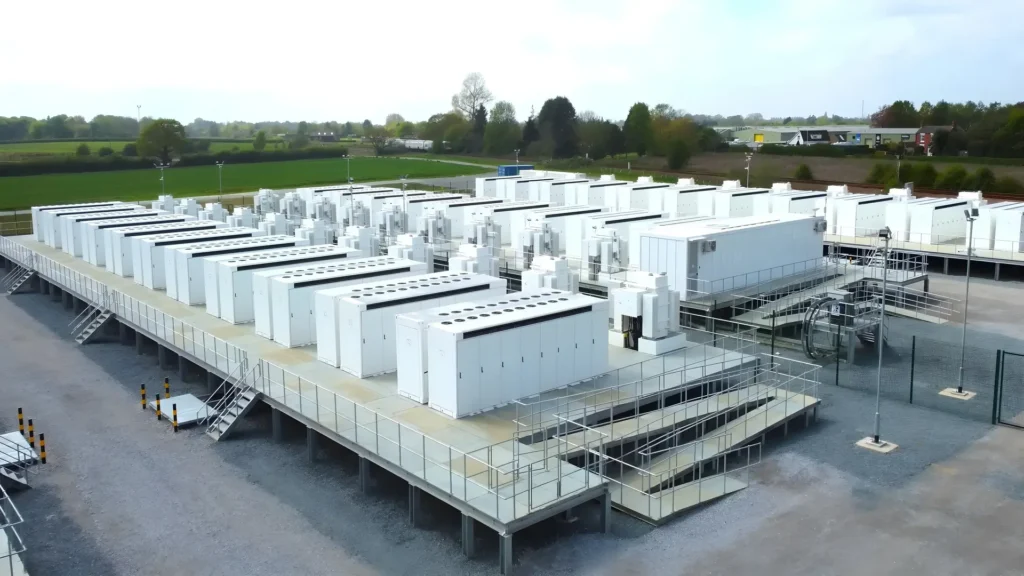In the dynamic landscape of alternative energy, achieving operational efficiency is no longer an optional goal: it is a strategic necessity. Leading renewable energy organizations adopt a comprehensive approach based on technological innovation, lifecycle management, and sustainable practices.
This article explores essential strategies for transforming an energy company into an industry leader by optimizing performance, reliability, and profitability.
The new paradigm of energy efficiency
Operational excellence in renewable energy combines innovation, digitalization, and sustainability. Key elements of this process include:
Investing in advanced energy technologies
- Energy storage systems: Solid-state or redox flow batteries allow surplus energy to be stored and released during periods of low production, ensuring a constant and reliable supply, reducing dependence on fossil fuel power plants, and making better use of renewable energy production.
- Smart grids and IoT: Sensors and smart grids enable faults to be detected before they affect supply, generation to be adjusted according to demand, and predictive maintenance to be carried out using AI, reducing costs and downtime.
- Hybrid systems: Integration of solar, wind, and other sources with conventional backup or storage, ensuring grid stability, security, and versatility.

Prioritize digital transformation
Data is as valuable an asset as infrastructure.
- Artificial Intelligence and Machine Learning: Applying AI to predict demand, optimize performance, and anticipate asset wear and tear enables you to:
- Predict demand.
- Optimize performance.
- Minimize risks and energy waste.
- Digital twins: A digital twin is a virtual replica of a physical asset (such as a turbine or solar plant) that allows scenarios to be simulated and improvements to be tested without risk or disruption. Its benefits include:
- Risk-free asset simulation.
- Maintenance optimization.
- Longer equipment life.
- Blockchain and transparency: Blockchain facilitates secure energy transactions, tracking the origin of electricity, and generating green certificates, which builds trust among customers and investors.
- Secure energy supplies.
- Green certificates.
- Greater confidence among customers and investors.
Sustainable business strategies
The energy transition is not only technological, it is also a change in business model.
1. Energy as a service (EaaS): This model offers clean energy on a subscription or contract basis, freeing customers from initial investment and encouraging mass adoption of renewables.
2. Circular economy: Applying circular economy principles to the manufacture and recycling of energy components reduces waste and increases the sustainability of the asset life cycle.
3. Strategic alliances: Collaborating with technology companies, universities, and government agencies accelerates innovation and project scalability.
Integration of renewable sources
To reduce emissions and operating costs, it is key to integrate different energy sources in a balanced way:
- Solar photovoltaic: high radiation.
- Wind: efficiency and power.
- Biomass: waste utilization.
- Complementary storage: lithium, flow, or hydrogen batteries.

Synergy between sustainability and profitability
Energy optimization does not mean sacrificing profitability. On the contrary, it involves:
- Automation to reduce costs.
- Maximizing the plant factor increases revenue.
- Reducing the carbon footprint opens up new financing opportunities.
Key industry statistics for 2025
- Global growth: In 2024, renewable energy generated a record 858TWh, 49% more than the previous year.
- Installed capacity: In 2023, 582GW of renewable capacity was added, of which 453GW was photovoltaic and 114GW was wind, reaching almost 30% of global electricity generation with renewables and a 46.2% share of installed capacity.
- Record investment: By 2025, global energy investment reached $3.3 trillion, with renewables leading the way in private and public capital.
- Regional growth: Latin America stands out with countries such as Argentina achieving 57% of electricity generation from renewables, and more than 50% of capacity additions in the region coming from wind and solar.
- Dominant trend: Renewables account for 90% of new utility-scale generation projects in 2024, with solar growing by 88% and wind surpassing coal generation in certain months.
Strategic keys: Technology and sustainability
Advanced storage has experienced significant growth, with global battery capacity increasing by 64% in 2024, enabling better management of renewable energy. Smart digitization, based on IoT, artificial intelligence, digital twins, and blockchain, optimizes the operation and monitoring of energy systems. Innovative business models, such as Energy-as-a-Service (EaaS) and the circular economy, are transforming the way energy is generated and distributed, while lower renewable energy costs and improved plant performance factors increase the return on investment.
Emerging technologies, such as artificial intelligence, enable demand forecasting and equipment maintenance optimization, while IoT facilitates real-time remote monitoring and control. The integration of renewable energy with smart grids ensures a balance between supply and demand, encouraging active consumer participation.
However, challenges and new demands are emerging: the growth in energy consumption due to the expansion of AI and data centers requires advanced storage and network modernization. Despite these challenges, there are success stories where companies such as Enel Green Power and Atlas Renewable Energy have optimized their efficiency through AI. The IoT contributes to more sustainable cities, and digital twins together with blockchain support innovative models such as EaaS, demonstrating that technology and sustainability are strategic pillars for the future of the energy sector.
Global impact and future
The adoption of artificial intelligence (AI) in the energy sector has reached 74% of companies worldwide, transforming the way electricity generation and consumption are managed. It is projected that by 2035, AI could account for up to 5% of electricity consumption in Latin America, optimizing efficiency and contributing to sustainability. Digitization also allows for greater decentralization of energy systems, improving the planning and use of renewable resources.
Conclusion
Leadership in clean energy depends on advanced technological investment, intelligent data management, corporate sustainability, and innovation. Companies that adopt this approach will be better prepared to cope with variability, reduce costs, and meet global emission reduction targets.
References
- Deloitte: Renewable Energy Industry Outlook 2025
- LinkedIn: 5 Renewable Energy Success Stories
- UN: Renewable Energy
- IG: Renewable Energy Actions 2025
Frequently Asked Questions (FAQ)
1.What is operational efficiency in renewable energy?
It is the optimization of processes and resources to maximize production and profitability of clean energy facilities.
2. Why is digitization important in renewable plants?
It enables real-time monitoring, predictive maintenance, and data-driven decisions that increase efficiency and reduce costs.
3. What are hybrid energy systems?
They are combinations of various renewable sources and conventional storage or backup to ensure a stable supply.
4. What advantages does energy as a service (EaaS) offer?
It allows access to clean energy without initial investment, facilitating the adoption of renewables and reducing operating costs.
5. How does AI contribute to energy efficiency?
It predicts demand, optimizes asset performance, plans maintenance, and minimizes energy waste.

